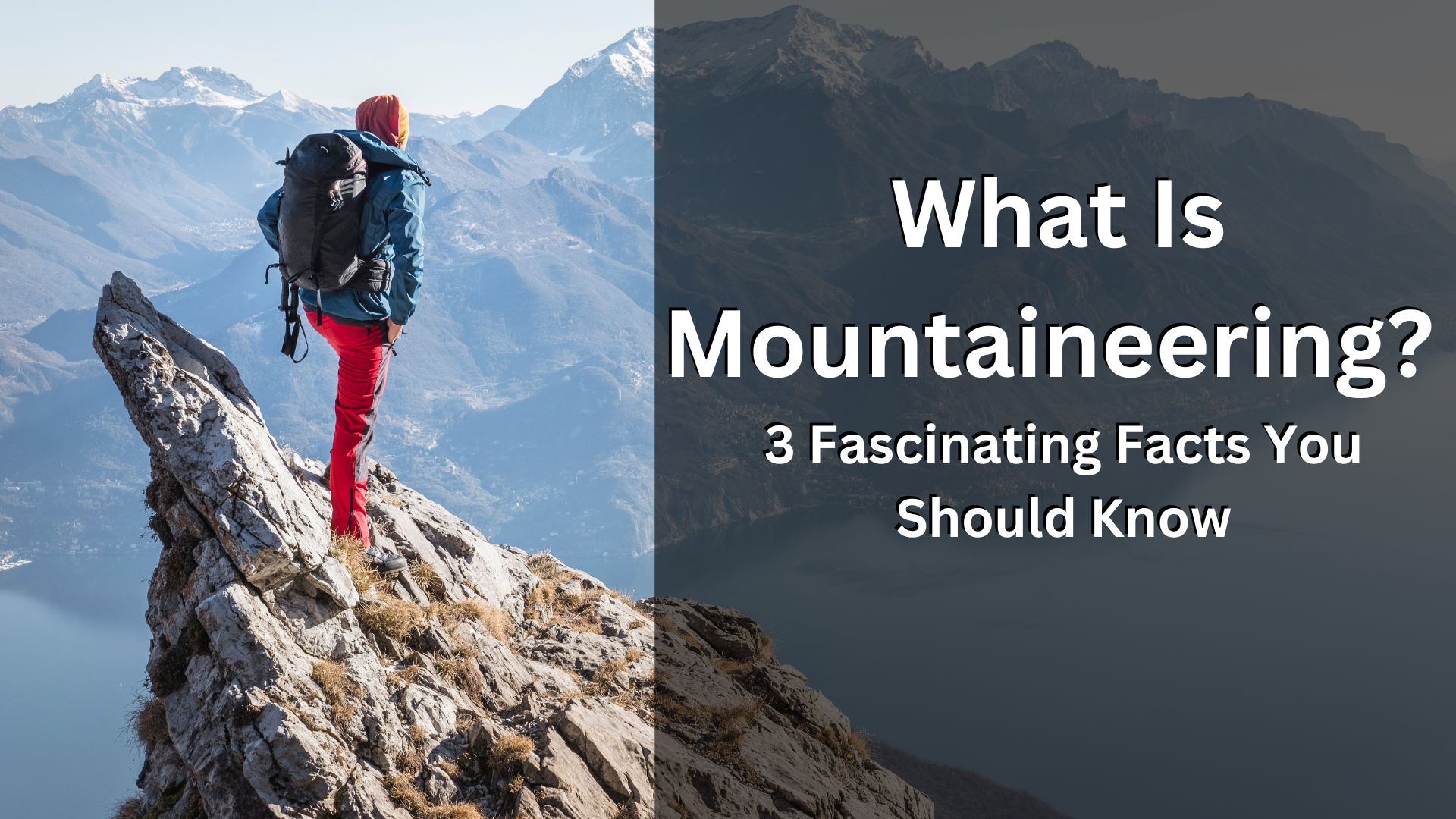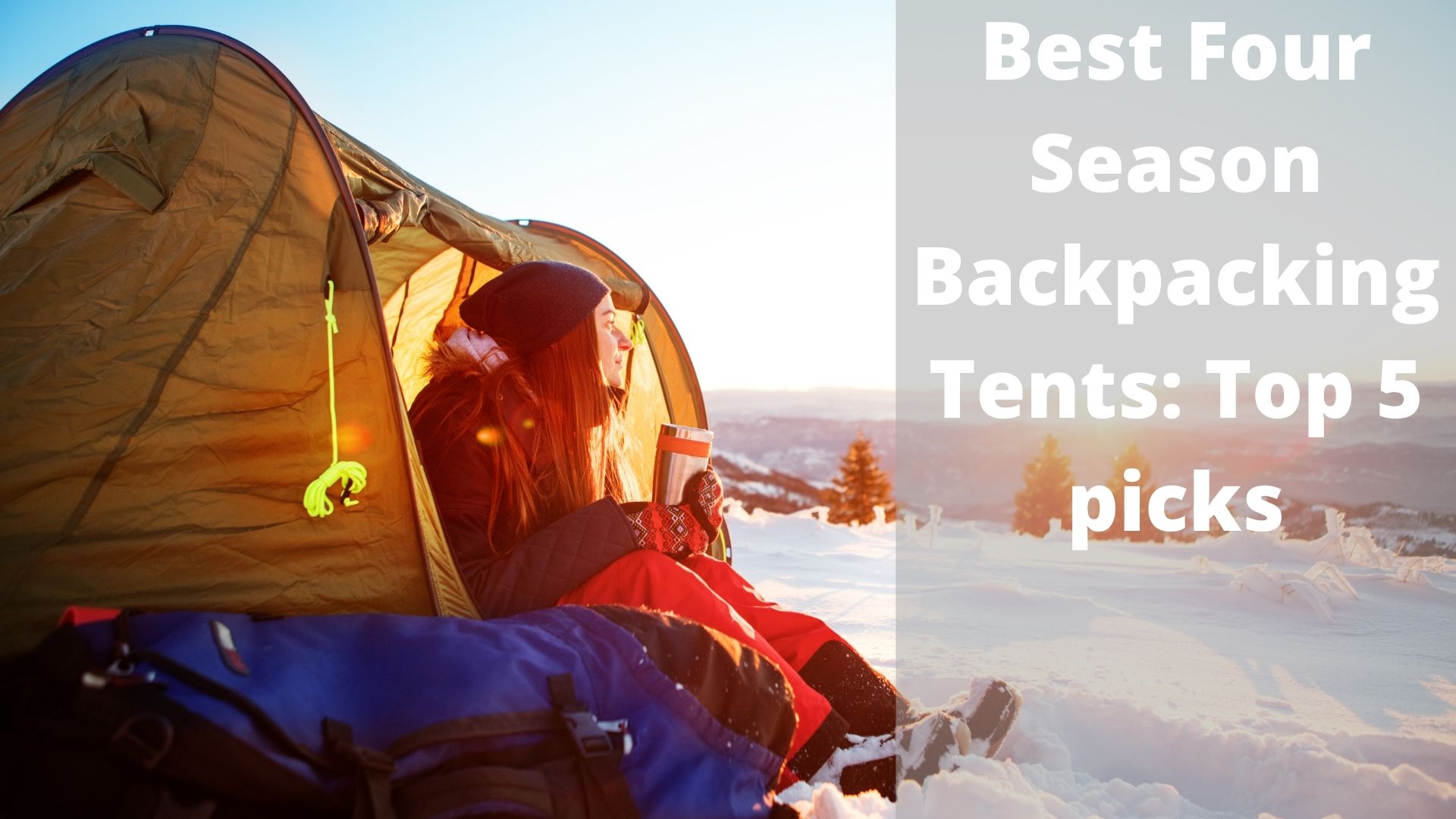When you think “what is mountaineering?”, what comes to mind?
For some, it might conjure images of daring climbers scaling sheer cliff faces. Others might picture picturesque peaks blanketed in snow, with adventurers braving the elements to summit them. Whatever your mental image may be, mountaineering is a fascinating and unique activity that has a rich history behind it.
Mountaineering can be traced back centuries, with early pioneers seeking to conquer the tallest mountains for bragging rights or simply out of curiosity. Today, people still climb mountains for those same reasons – but there’s also now an added element of adventure and challenge involved.
Mountaineers must often overcome difficult obstacles such as bad weather conditions, treacherous terrain, and even altitude sickness in order to reach their goals. Despite the challenges involved, mountaineering can be an incredibly rewarding experience.
It allows you to push yourself both mentally and physically while taking in some of the most breathtaking views on earth.
If you’re thinking about giving it a try yourself someday (or are just curious about what all the fuss is about), read on for more information on this exciting sport!
Check out Out Latest Guide to Four-Season Backpacking Tents Here >>
What Is Mountaineering?
Mountaineering activities include the act of climbing to, or near, the summit of a mountain. For many people, mountaineering is simply about enjoying the challenge and sense of accomplishment that comes with summiting a mountain.
However, it is important to be aware that mountaineering can be dangerous and proper preparation is essential before undertaking any climbs.
Some tips for safe and enjoyable mountaineering include having proper gear, being aware of weather conditions, knowing your limits, and being mindful of potential hazards on the mountain.
With these precautions in mind, anyone can safely enjoy the wonderful activity of mountaineering!
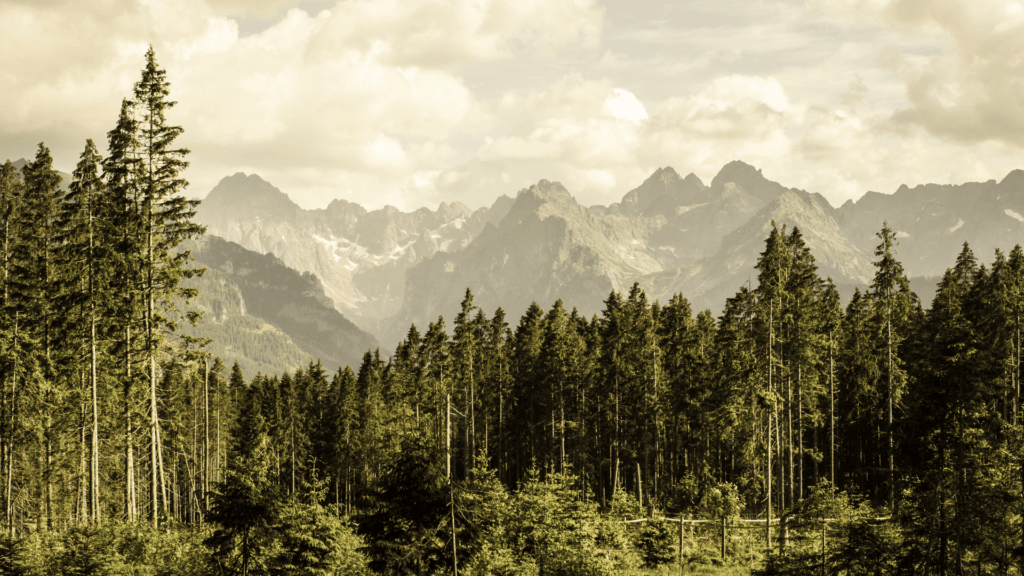
The History of Mountaineering
When answer the question, what is mountaineering, you cannot leave out how it came to be…
Mountaineering is a popular outdoor activity that dates back centuries. It involves the use of special equipment and techniques to climb mountains or other steep natural formations.
Early mountaineers were often driven by a desire to reach previously unexplored heights, but today many people enjoy mountaineering for its challenge and beauty.
The history of mountaineering is long and varied, with different cultures taking up the practice at different times.
The first recorded ascent of a mountain was made in China around 2700 BCE, when an emperor climbed Mount Taishan during a ritual journey.
In Europe, the Alps began attracting climbers in the Middle Ages, although it wasn’t until the 18th century that serious attempts were made to summit their tallest peaks.
Around this time, British gentleman-explorers started venturing into Nepal and Tibet in search of adventure (and bragging rights). During the 19th century, advances in technology allowed mountaineers to tackle ever-higher summits.
In 1865, Italian climber Gabriele D’Annunzio became one of the first people to scale Mont Blanc – which at 4 808 metres high is still one of the most popular climbs today.
As more mountains were climbed throughout Europe and North America, so too did public interest in the mountaineering grow.
This led to the rise of the professional guide industry, which continues to take tourists into those rarefied airspaces even now. By 1900 there were only a handful of 8 000 metre peaks left unclimbed – compared to over 100 such peaks today.
So what is mountaineering and where does mountaineering go from here?
Only time will tell! But one thing is for sure – as long as there are mountains to be climbed, there will always be mountaineers.
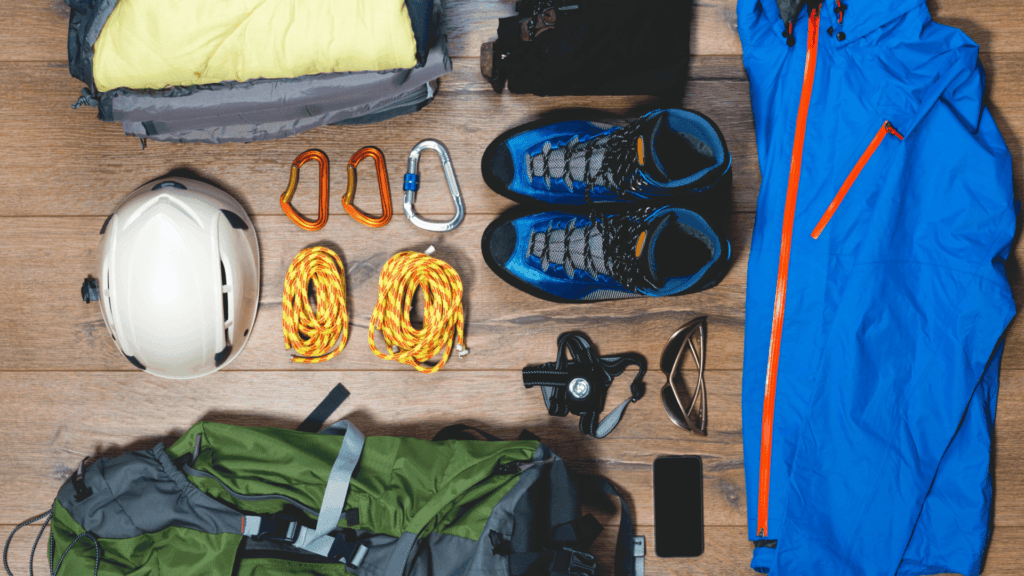
The Basics on Mountaineering Equipment
Since this article is a primer to really understand what is mountaineering, we won’t be going into a lot of detail around different types of equipment, why they are important, or the best out there but did want to provide some basic equipment that every mountaineering enthusiast cannot be without.
Check out REI’s Mountaineering Gear Essentials article Here >>
Here is the list of basic mountaineering equipment to keep you safe and having fun:
- Mountaineering Boots
- Climbing Helmet
- Climbing rated rope
- Climbing harness
- Plenty of carabiners (both locking and non-locking)
There are additional equipment you should care personally or as a team if you will be mountaineering where there is any chance of ice and/or glacier sheets.
The Act of Mountaineering
When people research what is mountaineering, they quickly find out that mountaineering can be a very dangerous sport. And while it is true that there are inherent risks involved in any kind of climbing, modern technology and safety equipment have made it much safer than it used to be.
Mountaineering is actually a lot of fun and can be a great way to get some exercise and enjoy the outdoors.
There are two main types of mountaineering:
Traditional and free climbing. Traditional climbers use ropes and other gear to help them scale the mountain, while free climbers rely solely on their own strength and agility.
Both styles require significant skill and experience. If you’re thinking about taking up mountaineering, there are a few things you should keep in mind.
First, make sure you’re physically fit enough to handle the rigors of climbing; it’s not for everyone. Second, start small by tackling easier climbs first; don’t try to summit Everest on your first outing!
Third, invest in some good quality gear; cheap equipment can be dangerous. Finally, find a experienced partner or group to climb with; going solo is never recommended.
Tips for Safe and Enjoyable Mountaineering
When it comes to mountaineering, safety should always be your number one priority. By following some basic guidelines and being prepared for changes in conditions, you can ensure that your trip is both safe and enjoyable.
Here are a few tips:
- Check the weather forecast before heading out and be prepared for changes in conditions.
- Layered clothing will help you regulate your body temperature as conditions change.
- Bring along plenty of food and water, especially if you’re hiking in hot weather.
- Pack essential items like first aid supplies, a map, compass, flashlight etc. In case of emergencies.
- Be aware of your surroundings at all times – know where potential hazards lie such as loose rocks or steep drop offs.
FAQs in Relation to What Is Mountaineering?
How do you define mountaineering?
There is no one definitive answer to this question. Mountaineering can be broadly defined as the sport of climbing mountains, but there are many different sub-disciplines within mountaineering that each have their own specific definition.
For example, rock climbing could be considered a type of mountaineering that focuses on ascent by way of rock faces, while alpine climbing might focus more on ascending snowy or icy peaks.
Ultimately, it is up to the individual climber to decide what constitutes mountaineering for them.
What are the 3 types of mountaineering?
The three main types of mountaineering are rock climbing, ice climbing, and alpine climbing. Rock climbers scale cliffs or other rock formations using a variety of techniques.
Ice climbers ascend glaciers or frozen waterfalls using specialized equipment such as crampons and ice axes. Alpine climbers combine elements of both rock and ice climbing to reach the summits of high mountains.
What is the purpose of mountaineering?
The purpose of mountaineering is to reach the summit of a mountain. This can be done for recreation, exercise, or as part of a race or competition.
Some people also climb mountains to perform scientific research, or to make first ascents—that is, they are the first people to ever climb a particular mountain.
What is mountaineering vs hiking?
Mountaineering is the sport of scaling mountains, either for recreation or to reach a summit. It typically requires special equipment and training, as well as experience in using ropes and other safety gear.
Hiking, on the other hand, is simply walking outdoors for pleasure or exercise. No special equipment or skills are required; anyone can do it.
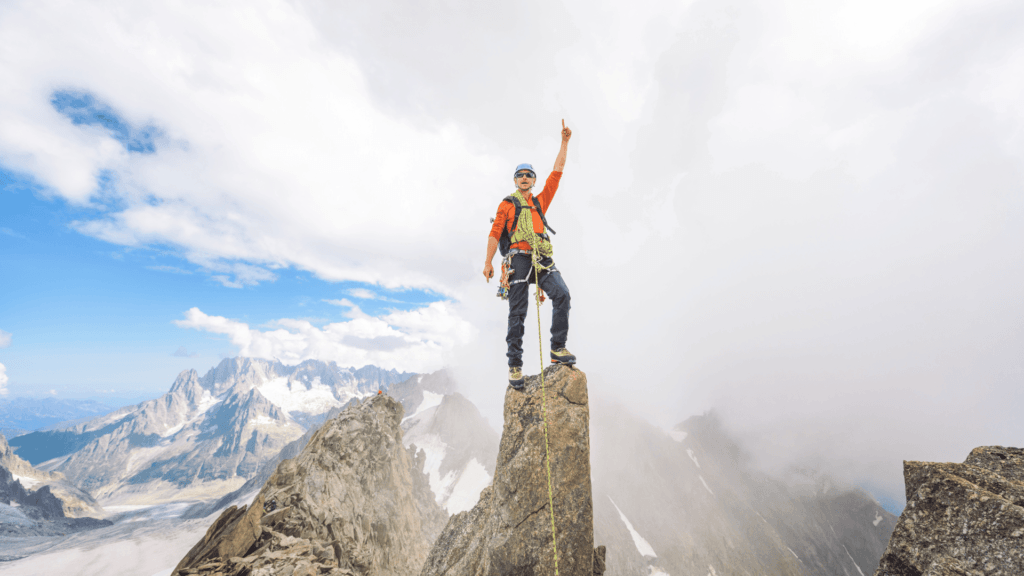
Conclusion
From summiting the world’s tallest peaks to simply enjoying a day hike in the mountains, mountaineering is an activity that can be enjoyed by people of all skill levels.
Though it does come with some risks, following safety guidelines and being prepared for your adventure will help ensure you have a safe and enjoyable experience.
Looking for the best gear to take on your next camping or backpacking trip? Look no further than Outdoorsymore.com! We have all the guides and “best of’s” lists to make your time in nature a success, including tents, sleeping bags, cookware, and more.
Have you tried out mountaineering yet? How did it go? What was your experience like? Let us know in the comments below!

